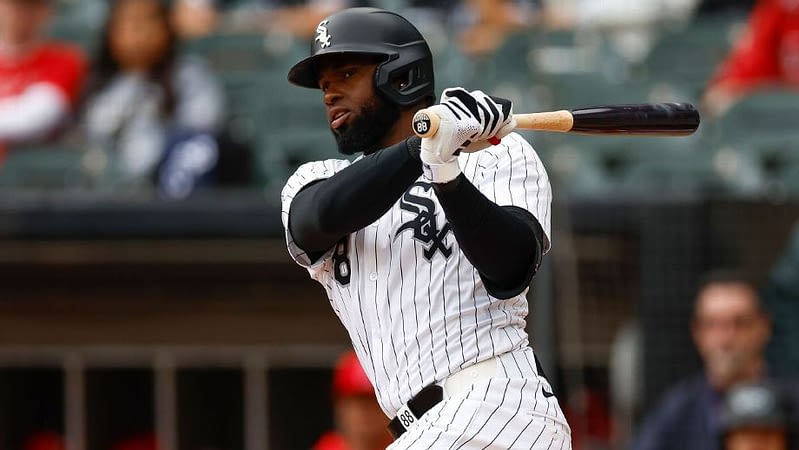Chicago’s Luis Robert Jr.: The Last Man Standing and a Potential Trade Gem
CHICAGO — At the tender age of 27, Luis Robert Jr. stands as a living relic of the Chicago White Sox’s fleeting era of contention. It’s a period that, for fans on the south side of Chicago, feels like a distant memory. That’s the kind of time distortion that can occur when a team endures back-to-back 100-loss seasons, including last year’s record-setting 121-loss campaign. Yet, it was only 3½ years ago, on Oct. 12, 2021, when the White Sox were eliminated by the Houston Astros from the American League Division Series.
Seventeen players took the field for the White Sox in that game. Robert, who managed a hit, had to leave early due to leg tightness, one of many injuries that have plagued his career. Today, he is the sole survivor of that roster still donning the White Sox uniform.
Here’s the twist: If Robert were playing at his full potential, he likely wouldn’t be in Chicago anymore. And if he regains his form, he’s as good as gone.
Robert is poised to be the most coveted position player in the 2025 in-season trade market. His name consistently appears near the top of speculative trade candidate lists, and league executives are eager to inquire about him. Despite a lack of recent positive results, including a disastrous 2024 and a challenging start to this season, it’s easy to see why he’s in demand.
“A player like Luis Robert always gets a lot of attention,” White Sox GM Chris Getz remarked at the season’s outset. “We’re really happy where he’s at, and how he approached spring training and how he’s performing. We expect him to perform at a very high level.”
Robert’s skills are undeniable. His bat speed ranks in the 93rd percentile in 2025, according to Statcast. His career slugging percentage when putting the ball in play is .661, placing him in the 89th percentile among all hitters, on par with New York Mets superstar Juan Soto. His sprint speed of 29.0 feet per second ranks in the 94th percentile. When healthy, he’s a perennial contender for a second Gold Glove, having won his first as a rookie.
Yet, Robert’s appeal extends beyond his raw talent. His contract is a significant factor. At the peak of his career and less than two years removed from a 5.3 bWAR season, Robert will earn just $15 million in 2025. He also has two team-friendly club options, both at $20 million with a $2 million buyout.
No other potentially available hitter offers this combination: recent elite production, prime age, top-tier talent, and a club-friendly contract with multiyear potential and exit options. Given that he plays for a team projected to finish at the bottom, it’s a matter of when, not if, he will be traded.
“I didn’t think I’d be here,” Robert admitted through an interpreter. “But I’m glad that I’m here. This is the organization that made my dream come true. It’s the only organization that I know.”
The White Sox could have traded Robert by now, based on his contract and talent alone. However, the contract’s flexibility allows the team to wait for the best return. First, Robert must prove he’s healthy, which he has done so far in 2025. Then, he needs to demonstrate the kind of production that would make him a valuable asset for a team in win-now mode.
“He’s just extremely talented,” first-year White Sox manager Will Venable said. “The one thing that I learned about him, and watching him practice every day, is he practices extremely hard. He’s extremely focused. He certainly has the physical ability, but he’s the type of player he is because he works really hard.”
While his skills are elite, his production has been inconsistent and, for now, trending downward.
When Robert debuted with Chicago, he was a consensus top-five prospect. ESPN’s Kiley McDaniel ranked Robert fifth before the 2020 season, but noted a key reason why Robert remains with the White Sox five years later: “The concern is that Robert’s pitch selection is weak enough — described as a 35 on the 20-80 scale — that it could undermine his offensive tools.”
Since the start of last season, 202 hitters have had at least 450 plate appearances. According to the FanGraphs metric wRC+, only 15 have performed worse than Robert’s 80. Only 10 have a worse walk-to-strikeout ratio (0.22). Only nine have a lower on-base percentage (.275).
Despite starting the season healthy, his early numbers are even worse than last year. As the team around him struggled, Robert’s slash line hit career lows (.224/.278/.379 over 100 games). This year, it’s a concerning .163/.250/.245.
There is evidence that Robert is working to improve. His walk rate (10.3%) is nearly double his career average. Although the sample size is small, there are indicators that suggest it could be significant. For instance, Robert’s early chase rate (34.2%, per Statcast) is a career low and closer to the MLB standard (28.5).
For aggressive hitters, mastering plate discipline is a daunting task. Few players have faced a longer journey than Robert. During the wild-card era, 1,135 players have had at least 1,500 plate appearances. Only 17 have a lower walk-to-strikeout ratio than Robert’s career figure (0.21).
- Among 133 hitters with a career mark of 0.3 W/SO or lower, there have been 645 seasons of at least 300 plate appearances.
- Only 26 times did one of those seasons result in a league-average ratio, or about 4%.
- Only one hitter had two such seasons, while 24 did it once and 108 never did.
Still, 4% isn’t zero. To that end, Robert spent the winter working out with baseball’s current leader in W/SO — Soto.
“It’s no secret that one of the reasons why he’s one of the best players in the game is that he’s quite disciplined,” Robert said. “And that’s one of the things I want to improve.”
That’s easier said than done, and Soto noted that the workouts were primarily just that — workouts, though Robert’s hitting coach was present. Soto was impressed by Robert’s talent.
“Tremendous baseball player and tremendous athlete,” Soto told ESPN’s Jorge Castillo in Spanish. “He showed me a lot of his abilities that I didn’t know he had. That guy has tremendous strength, tremendous power. And he really surprised me a lot in everything we did.”
In this year’s Cactus League, Robert posted a .300/.386/.500 slash line, with four homers.
“If I’m able to carry on the work that I did during spring training, I’m going to have a good season,” Robert said. “Especially in that aspect of my vision of the whole plate. I know I can do it.”
Getz, who will ultimately decide if and when to trade Robert, praised his efforts during the spring.
“Luis Robert is in an excellent spot,” Getz said. “The amount of three-ball counts that he had in spring training was by far the most he has had as a professional player. So that just speaks to his determination and focus to put together quality at-bats.”
It’s a bittersweet situation. The last remnant of the White Sox’s previous success remains the team’s most talented player. He’s in his age-27 season, often the peak of a hitter’s career. Yet, if he reaches that peak, it will likely expedite his departure.
For the White Sox, the focus is on ensuring Robert remains concentrated on the field, despite the persistent trade rumors.
“We’re going to support Luis,” Getz said. “I know that oftentimes he gets asked questions whether he’s going to be traded, but I’ve been really impressed with how he’s been able to remain focused on his craft. He’s very motivated to show the baseball world what he’s capable of doing.”
Originally Written by: Bradford Doolittle





















